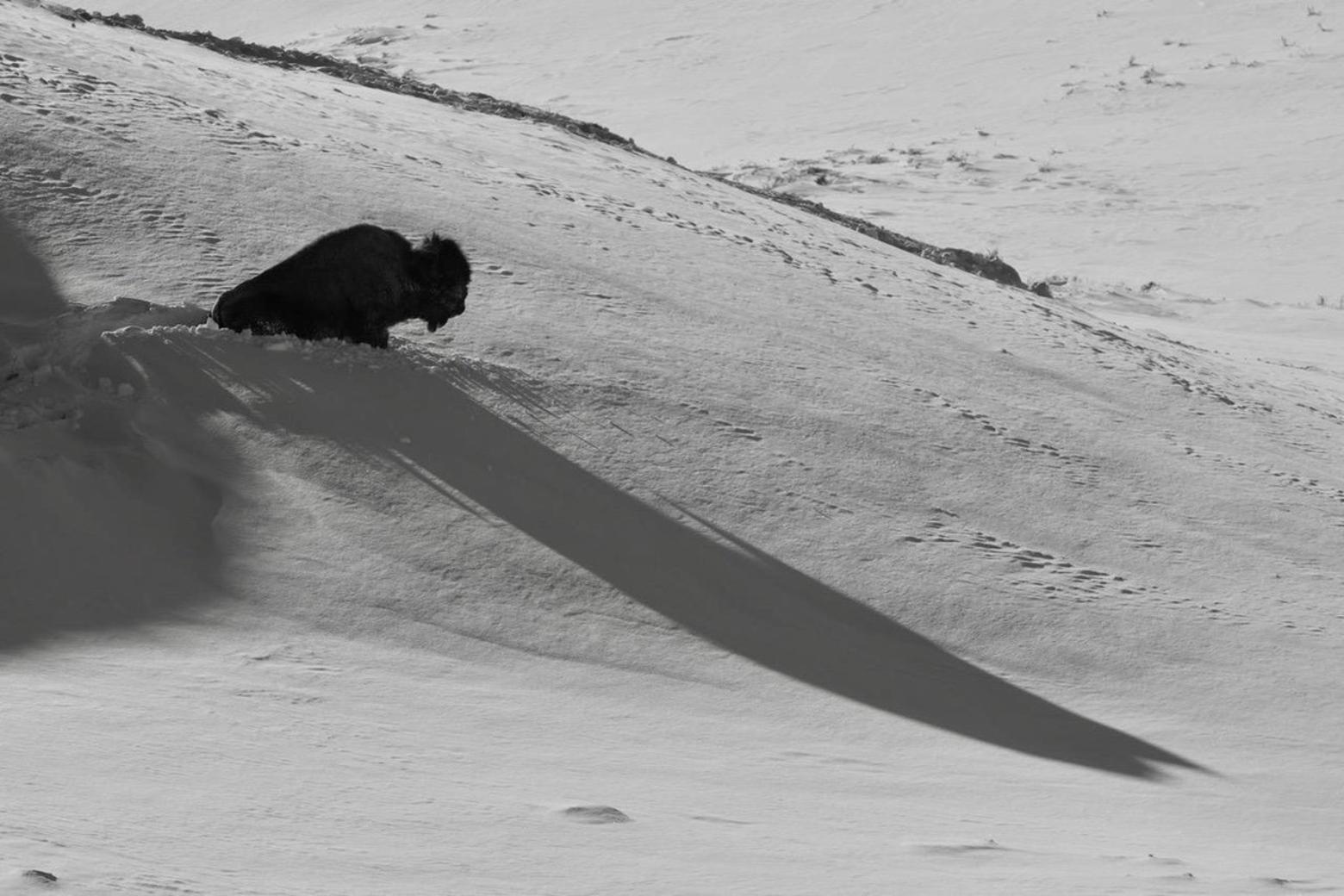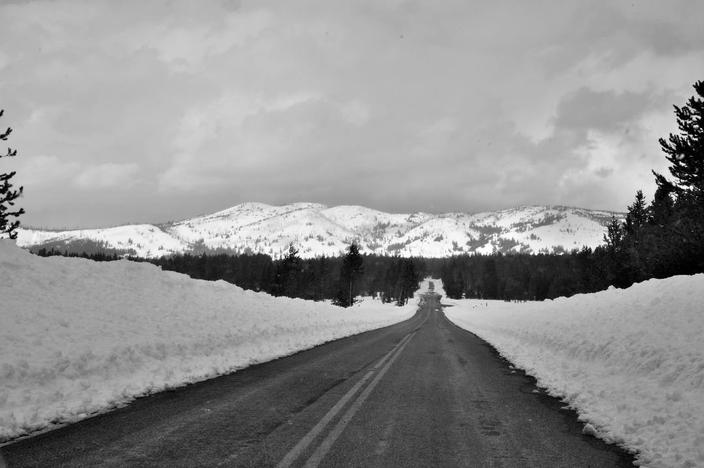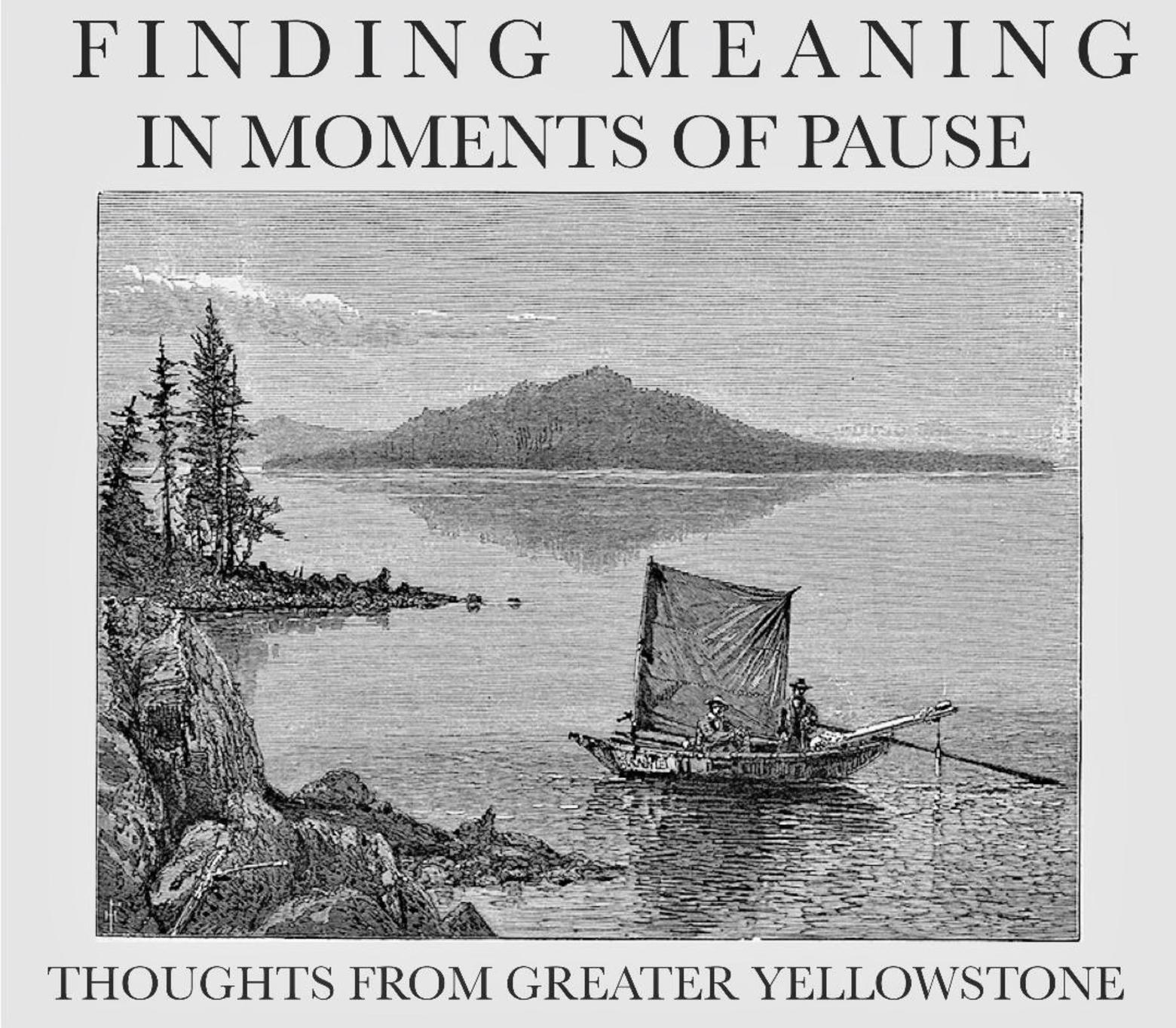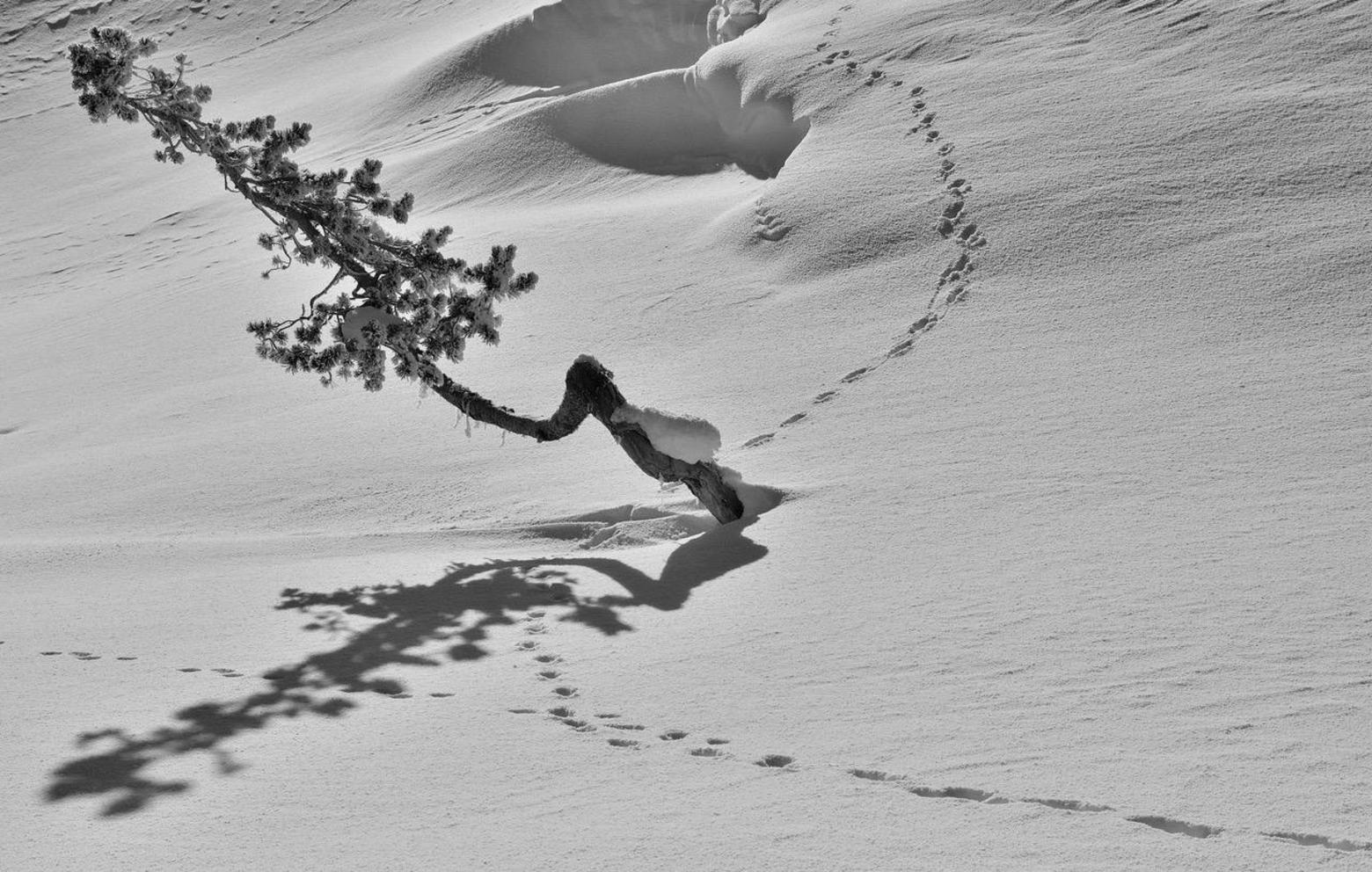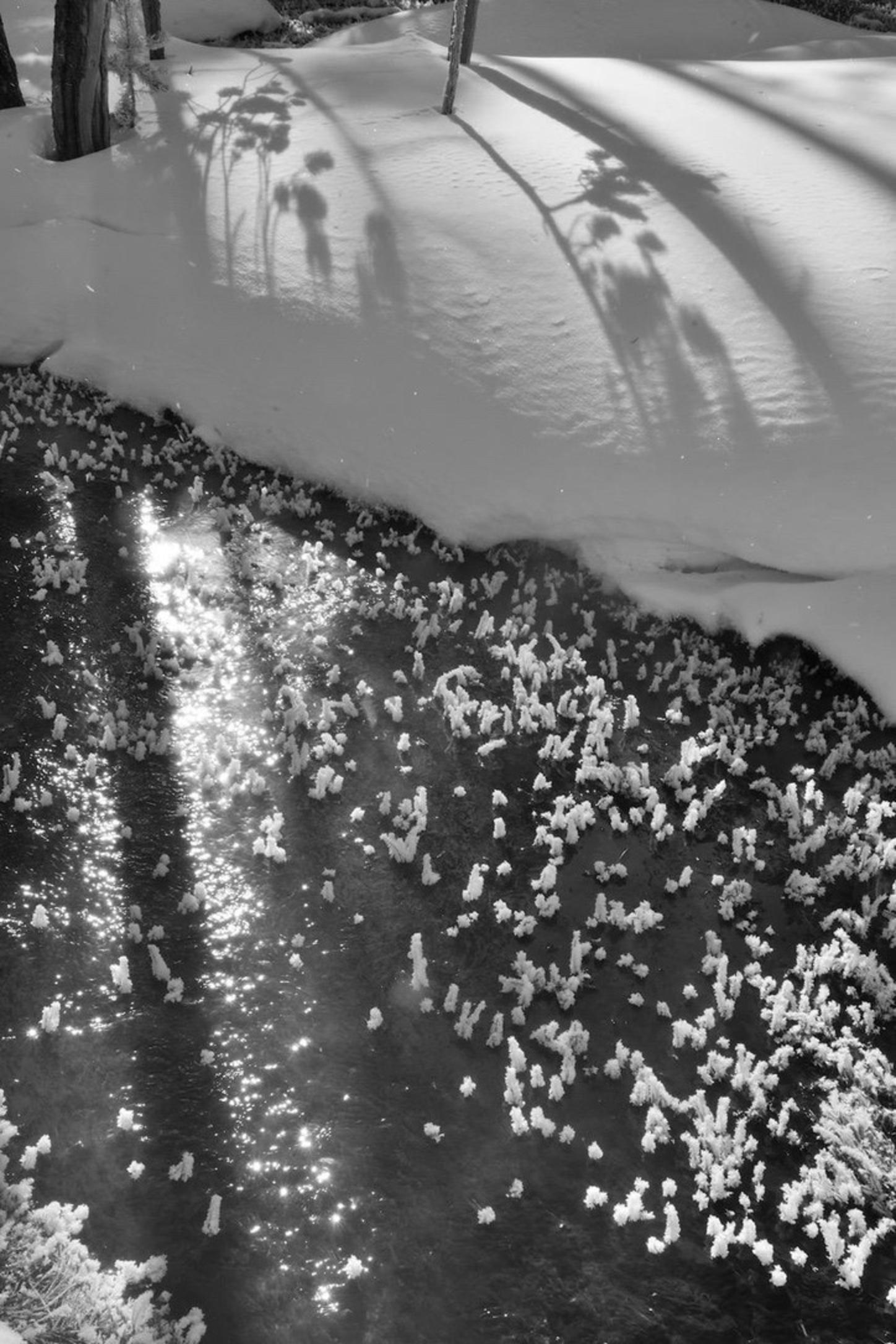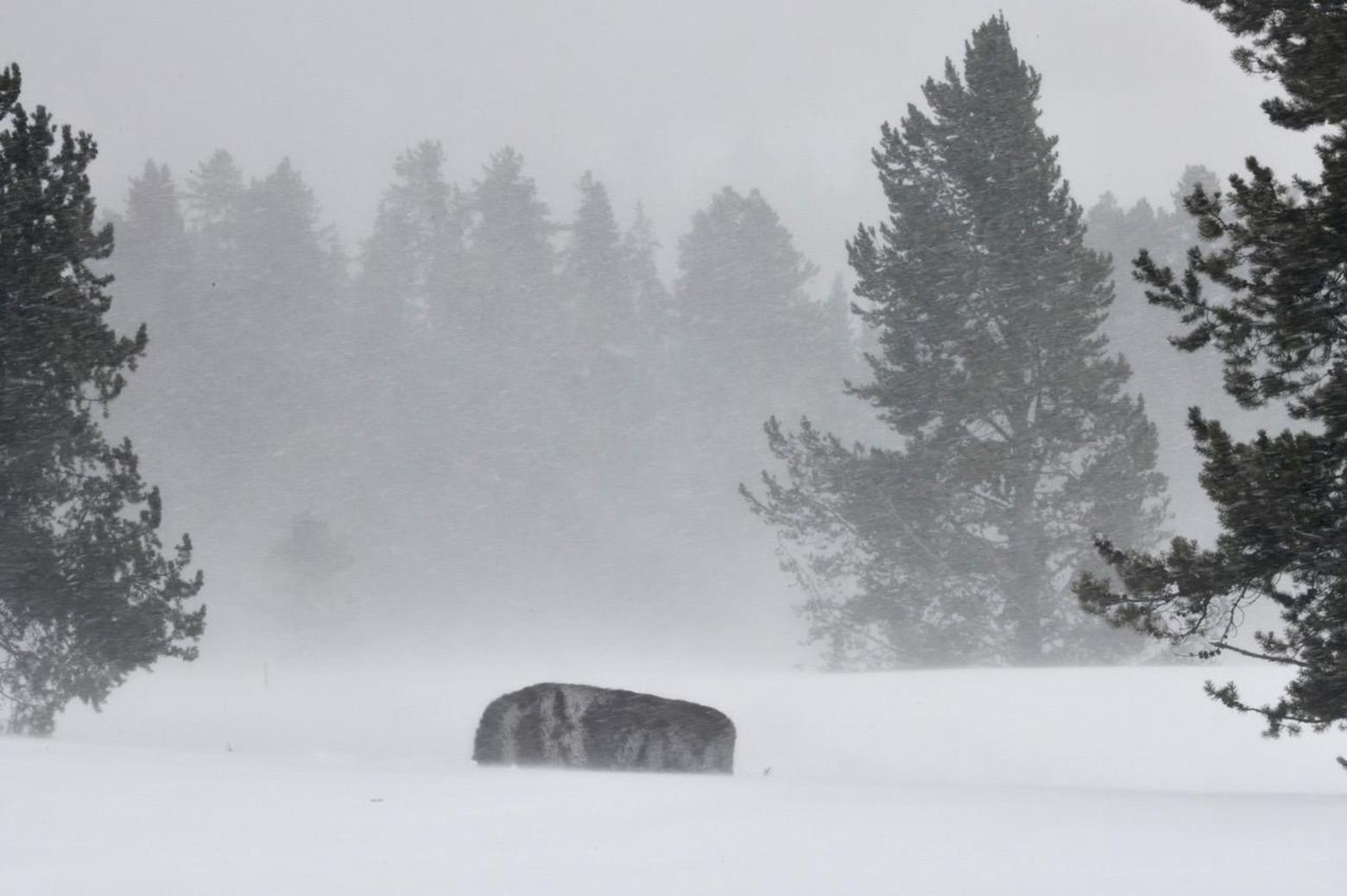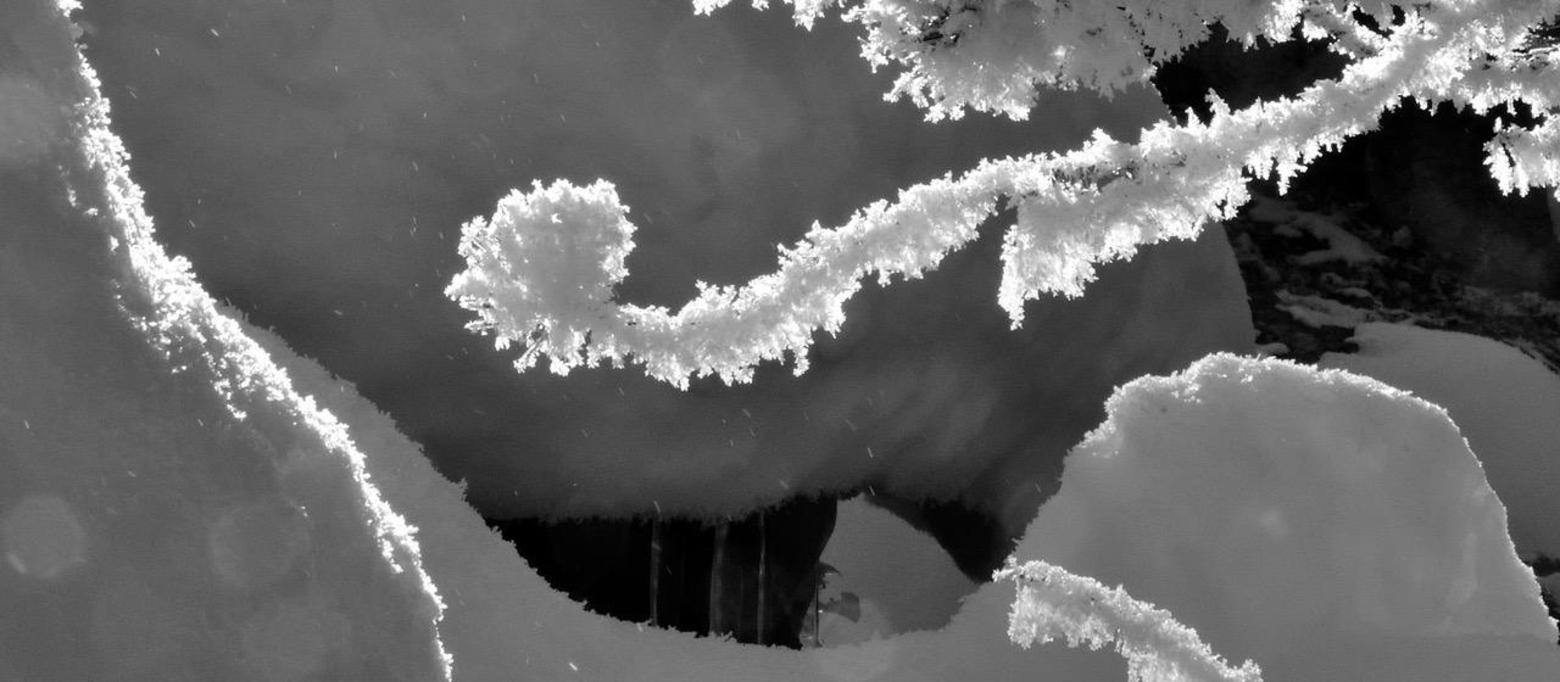Back to StoriesWhen The War Finally Comes (to America's First National Park)
Quartered safe out here, snowbound high in the heart of the Yellowstone Plateau, I am enjoying the last peaceful weeks of the season as a solitary winterkeeper in the heart of the park even as I hear the approaching roar of the fleet of Park Service rotary snow plows opening the interior highways.
April 4, 2020
When The War Finally Comes (to America's First National Park) Ready for survivalism, are you? Yellowstone winterkeeper Steven Fuller indelicately dismantles the End-Times fantasy. There is no place humans can run to escape ourselves
Essay and Photographs by Steven Fuller
Quartered safe out here, snowbound high in the heart of the Yellowstone Plateau, I am enjoying the last peaceful weeks of the season as a solitary winterkeeper in the heart of the park even as I hear the approaching roar of the fleet of Park Service rotary snow plows opening the interior highways.
For decades in winter I have sheltered here in place. The life and work has always been physically hard, but the social distancing has never a hardship. Often I have enjoyed no outside human physical contact for weeks. I am grateful for good company, but as Charlie Russell remarked, “People are at their best when they are few and far between.” He would get no quarrel with the non-human inhabitants of Yellowstone.
On rare occasions I go down to town for fresh supplies 95 miles to the north or I have been required to snowmobile to park headquarters 36 miles north for a meeting. A few days after returning home I often have come down with a cold and once with the flu. Sodom and Gomorrah have always been reliable places to catch a social disease, so I try and keep my distance.
As a lover of winter, the arrival of the plows has always come too early since it marks the end of the season of recuperation from the mandatory busyness of the rest of the year. As well, the plows signal the end of quiet and peace and of the opportunity to commune most deeply with the natural world, and at times the opportunity to reflect on one’s own life, and maybe even on the human condition.
I’ve long thought of the breaching of the season by the plows as communion interruptus, but now in this time of planetary plague it is especially so.
For not far behind them follows not the human masses this year but the silent invasion of the Covoid-19 that will infiltrate even this remote sequestered castle keep.
When threatened we all hope for escape to a place of
refuge.
“When the war comes we will go to the desert,” my old departed friend Henno Martin recalled in his classic account subtitled “Robinson Crusoe in the Namib,” of his and Herman Korn’s two and a half years sheltering from the sanctioned mass murder of the Second World War deep in the desert of what was then colonial German South-west Africa.
Today many of us dream, fantasize, and more and more prepare for escape to some remote wild place where we can survive and even thrive safe from the collapse of civilization beyond the reach of the madness of the 31 flavors of apocalypse.
Me too, even as I write this from nearly the isolated geographic middle of Yellowstone. When I was ten years old I had a cardboard box in my bedroom closet with a box of .22 ammunition, matches, candles, a hunting knife, a compass, and a couple cans of sardines and candy bars.
In my childhood the message “duck and cover” was an ever- present reminder that the sword of Atomic War hung by a thread overhead. Later, as a sober adult student of the history of the Holocene, I’ve expected apocalypse and dystopia all my life. Add up the human numbers and the plundering of resources. This mostly unspoken dread permeates our contemporary collective unconscious.
So, Plan B: when which-ever apocalyptic flavor blooms, “We’ll go to Yellowstone!” some say. Mountain-man redux: as the cities burn we’d arrive in our 4X4s or on our snowmobiles, packin’ plenty of ammo and MREs until we can get our buffalo jerky operation going.
We’d mow down the rabid mobs fleeing the cities and by-god kill any like-kind of upstart competitor that found his way into our mountain fastness. We’d be dressed in skins and furs by the coming of the first winter, “right Hoss!!”
But, in short order, all the buffaloes, anything bigger than a vole, would be most all shot-out by the end of the year, the same way it came close to happening in the years after Yellowstone was created and the locals didn’t respect the boundaries of protection. Before the Cavalry, ironically, was called in.
The remnant survivalists would become involuntary vegetarians, of which the Yellowstone Plateau offers a poor buffet.
Alternately, for the reprobate carnivores with small trapping and culinary skills, perhaps Souris en Brochette would do. The more successful and creative, on special occasions, might try Souris A’ La Crème. Mice and voles, eaten in a sufficient quantity, will provide the necessary calories and nutrients to survive long term. With a little help from the wife and kids they might even feed their family. If you need a refresher on the nutrition found in rodents, watch the movie Never Cry Wolf again.
And, another positive thought: the carcasses of the least successful wanna-be survivalists would nourish magpies and wolves, worms and maggots, and thus, allied with the wolves, posthumously they too would “alter the course of Yellowstone’s rivers (ala The TED Radio Hour).”
My uncle Cletus always said, “You can run, but you can’t hide”: okay, not original, but thought-provoking none the
less. And true. Globalization has given us lots of cheap stuff and a merciless plague. With 24-hour anywhere on a planet with air service, which includes a free ride for anybody’s virus, there is no safe place to hide, not in the Namib, not in Yellowstone.
My uncle Cletus always said, “You can run, but you can’t hide”: okay, not original, but thought-provoking none the less. And true. Globalization has given us lots of cheap stuff and a merciless plague.
But it’s not holding folks back from heading to Montana. BZN will be wild enough for most, and no hard core survivalists have yet been sighted heading up here onto the central Yellowstone Plateau. Maybe they’re waiting for the Big One. And this ain’t it.
In the last couple of weeks there have been increasing numbers of news reports across the country (“The Wealthy Flee
Coronavirus. Vacation Towns Respond: Stay Away”) and in the UK (“Cornwall urges people to stay away fears influx of 'out-of- towners' will overwhelm health services.”
Just two of many recent stories from many places recounting the arrival of city folk come to shelter-in-place in their second homes (or third, or fourth) if they’ve got them, or in airbnbs if not, and to buy or rent hidey houses—just last week a realtor friend in Livingston told me of unprecedented numbers of queries by email, phone, and text looking for Montana property.
In the past it was frequently said that “Californians bring California with them” when they move to Montana. Now many locals fear their baggage includes Covid-19. Invariably some of the refugees have brought the illness with them and are shedding the virus as they help clear out the grocery shelves.
Locals are alarmed that in future weeks when the poop hits the fan and the fugitives get sick they will overrun our limited medical facilities, too. Only the most polite among the locals ask, “please shelter in place.” But we still have plenty of people, locals and not, who don’t like being told what to do.
Close to home and personal the shadow of the reaper is fast darkening our Big Sky Country and in due course he will take his portion of us.
The Monty Python bit in The Holy Grail is not so funny anymore:
Bring Out Your Dead
Hold out your life, best as you can
The whole world's burnin' down
But if it comes together, I'll be in your town
We can work it out, out, out
Until just a little while ago the Coronavirus debunkers, previously common in the Rocky Mountain West and The White House, held the stage. The more thoughtful among them asked, “What’s’ the difference between this flu and the annual influenza?”, implying there wasn’t any.
The least cognizant chanted “Fake News!” and insisted it was all a politically-motivated hoax, once again demonstrating that ideology trumps science.
Since many walk the walk of their convictions their ranks may be thinned in coming weeks. Others, not so militant, were blasé, conflating obligatory American optimism and naive confidence with personal immunity. That didn’t work out so well during the age of Polio and Spanish Flu.
Many of us, complacent, comfy in our cocoon of “normalcy,” never questioned but that our world was immutable or that our American exceptionalism would protect us. We resembled the Aztecs the day before the white sails appeared on the horizon and then landed on shore with smallpox.
We went to sleep a few weeks ago never dreaming we would wake up in a different world. Subsequently many of us have come to realize that in the future weeks and months we will probably see mega dead in America and around the world and that the ordeal will be a life-time marker for us all—to remember if you live through it.
As the Covid-19 overtakes my little sequestered corner of the world I have gone to the library of books that fill my house and to the global library on my computer. I am trying to understand this queer viral entity and our ancient synchronized macabre dance with its kind, so as to try and make sense of our latest cohabitee in the context of the history, the future, and the larger quandaries of my species.
So, confined here in this plague year, in wonderland, I surfed through the body of horrific Medieval plague art as long as I could bare it. Re-watched a film favorite, The Seventh Seal, which is “set in Sweden during the Black Death that tells the story of a medieval knight and a game of chess he plays with the personification of Death come to take his life.”
I Googled non-fiction, fiction, contemporary, and historic literature concerned with pandemics and etc. and overwhelmed by the results I settled on an old Penguin paperback A Journal of the Plague Year on my own shelves and perused parts of Samuel Pepys, both of which helped put our current experience in perspective.
But, what is this Covis-19, the most recent player in this collective genome of entities, which for so long has brought misery and horror to humanity?
Scientists say the virus is neither living nor non-living, that it is something in between, which is an idea that challenges our conventional cultural sense of either/or. “It,” (these Coronaviruses are the epitome of an “it”), is an entity that once it gains entry into our body inserts itself into a living cell and uses its scrap of RNA, like an algorithm, to force the host cell to replicate millions of itself which we cast to the winds ala Johnny Appleseed.
This malignant romance between virions and humanity has an ancient genesis. Covid-19 is but the most recent of a very long succession of pathogens that have evolved to jump from animals to Homo Sapiens ever since we emerged out of Africa.
As we spread to the remotest places on earth we were accompanied by our intimate domesticated accomplices: dogs, sheep, cattle, goats, chickens, swine that, like us, carried a potpourri of bacteria, fungi, protozoa, worms, viruses, and infectious protein prions that mutated to appear as measles, flu, small pox, chicken pox, plague, HIV, ebola, and etc.
All the plagues in human history have involved our relationships, our viral bridge, with other animals; this includes Covid-19. So it is a familiar face in the peripatetic family of the faces of death, despite the post-modern belief in our own invincibility.
Early on, our expanding diaspora introduced novel pathogens to our Neandertal cousins which likely contributed to their extinction. Our subsequent dispersal of alien pathogens contributed to the worldwide extinction of much of the world’s megafauna starting 50,000 years ago in Australia which continues to accelerate globally to this day.
A generation after Europeans arrived in the New World their pathogens had clear-cut the vast, vast majority of the indigenous population. Epidemics and pandemics are familiar companions which have continuously plagued humanity since we began clustering in cities 10,000 years ago.
Covid-19 is just the latest incarnation of that menage.
If one was dispassionate about it one would have to admire its recent success in colonization, its infiltration into our 7.8 billion human mono-culture is for it an evolutionary success story.
While Covid-19 poses an immediate threat to my family, friends, and myself, climate change, for now relegated to the back ground, looms as the far greater threat. It continues to fast erode the remaining integrity of the natural world while threatening the viability of our collective civilization and perhaps the survival of our species.
Climate change is and will bring deadly pathogens to new areas where they haven’t existed before, even the Greater Yellowstone Ecosystem.
So, for the hell of it, with nothing better to do, I will call this worldwide Covid pandemic *“Little Boy.” The big one, climate change, I will name *“Fat Man.”
Little Boy’s plague will probably kill a few millions of us but “Fat Man” the climate change bomb—unless we have an epiphany—will lead to the dissolution of human civilization and to multi-mega-deaths.
I am hoping our experience of “Little Boy” will be a wake-up call, like the smart “smack” of a kyosaku—the flat wooden paddle struck on the shoulders of a Zen novice by a Zen teacher when the student’s monkey mind wanders during meditation.
”Smack!” “Wake up!” the smack demands. “Stop daydreaming!” and “master your fantasies!”
Maybe Covid-19 will prove to be a metaphorical kyosaku to break through the protective shell of our collective climate change self-delusion coupled with false conviction that we are in control.
As the ice melts, and the seas rise, and the hot gets hotter, the wet wetter, and the dry drier, 7.8 billon of us have no place to run and no place to hide.
While, in the background, the masked chorus will contine to recite in unison their foolhardy dithyramb denial of our collective tragedy as “a hoax” and they will do so until doomsday when it’s time to don their costumes of survivalism.
So I turn away from reality, as a spring snowstorm falls over the Grand Canyon of the Yellowstone and Hayden Valley where there is a band of bison trying to refrain from becoming winterkill.
I put on some “old time music” and pour a pale ale along with a song, The End, I first heard in my youth. Maybe you know it:
“This is the end, my only friend, the end. Of our elaborate plans, of everything that stands” followed a little while later by Once in a Lifetime: “And you may ask yourself, well How did I get here?... Same as it ever was…"
What remains of my obligatory American optimism is challenged as we rush full steam ahead, where on old maps the circle that enclosed the Garden of Eden warned, “there lies the edge of the world.”
EDITOR'S NOTE: At the end of World War II, "Little Boy" was the name given to the atomic bomb dropped by US forces on Hiroshima on August 6, 1945. "Fat Man" was the name for the a-bomb dropped on Nagasaki on August 9, 1945.

